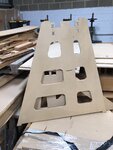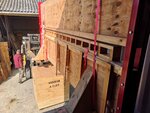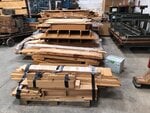The Mossie avoided losses by outrunning the enemy . So why were streamlined pods not fitted to the rear fuselage say four in each quarter containing a small machine gun (the Browning .50 AN/M2 would be good ) that could fire tracer . Operated by the co pilot and sighted through enhanced rear facing wide and narrow mirrors .
How disconcerted an attacker would have been with four streams of tracer coming at him . So forcing him to evade or be shot down and reducing time could stay on Mossies tail .
In fact on firing this quad mount it would have given the mossie a speed boost . So good idea or ? .
How disconcerted an attacker would have been with four streams of tracer coming at him . So forcing him to evade or be shot down and reducing time could stay on Mossies tail .
In fact on firing this quad mount it would have given the mossie a speed boost . So good idea or ? .





